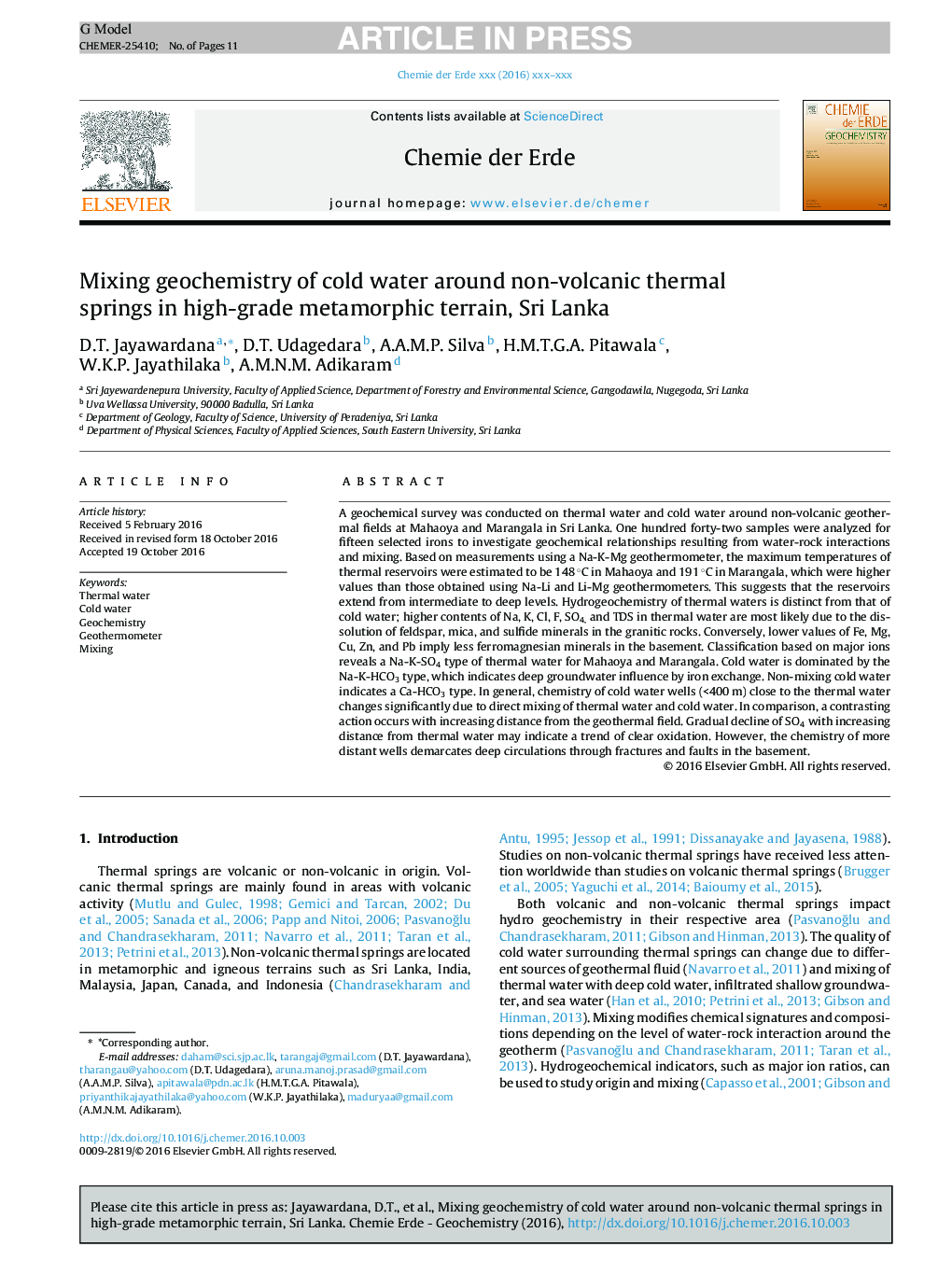| کد مقاله | کد نشریه | سال انتشار | مقاله انگلیسی | نسخه تمام متن |
|---|---|---|---|---|
| 5745658 | 1412410 | 2016 | 11 صفحه PDF | دانلود رایگان |
عنوان انگلیسی مقاله ISI
Mixing geochemistry of cold water around non-volcanic thermal springs in high-grade metamorphic terrain, Sri Lanka
ترجمه فارسی عنوان
مخلوط کردن ژئوشیمی آب سرد در اطراف چشمه های حرارتی غیر آتشفشانی در زمین دگرگون کننده درجه بالا، سریلانکا
دانلود مقاله + سفارش ترجمه
دانلود مقاله ISI انگلیسی
رایگان برای ایرانیان
کلمات کلیدی
آب گرم آب سرد، ژئوشیمی، ژئوترمومتر، مخلوط کردن،
موضوعات مرتبط
مهندسی و علوم پایه
علوم زمین و سیارات
ژئوشیمی و پترولوژی
چکیده انگلیسی
A geochemical survey was conducted on thermal water and cold water around non-volcanic geothermal fields at Mahaoya and Marangala in Sri Lanka. One hundred forty-two samples were analyzed for fifteen selected irons to investigate geochemical relationships resulting from water-rock interactions and mixing. Based on measurements using a Na-K-Mg geothermometer, the maximum temperatures of thermal reservoirs were estimated to be 148 °C in Mahaoya and 191 °C in Marangala, which were higher values than those obtained using Na-Li and Li-Mg geothermometers. This suggests that the reservoirs extend from intermediate to deep levels. Hydrogeochemistry of thermal waters is distinct from that of cold water; higher contents of Na, K, Cl, F, SO4, and TDS in thermal water are most likely due to the dissolution of feldspar, mica, and sulfide minerals in the granitic rocks. Conversely, lower values of Fe, Mg, Cu, Zn, and Pb imply less ferromagnesian minerals in the basement. Classification based on major ions reveals a Na-K-SO4 type of thermal water for Mahaoya and Marangala. Cold water is dominated by the Na-K-HCO3 type, which indicates deep groundwater influence by iron exchange. Non-mixing cold water indicates a Ca-HCO3 type. In general, chemistry of cold water wells (<400 m) close to the thermal water changes significantly due to direct mixing of thermal water and cold water. In comparison, a contrasting action occurs with increasing distance from the geothermal field. Gradual decline of SO4 with increasing distance from thermal water may indicate a trend of clear oxidation. However, the chemistry of more distant wells demarcates deep circulations through fractures and faults in the basement.
ناشر
Database: Elsevier - ScienceDirect (ساینس دایرکت)
Journal: Chemie der Erde - Geochemistry - Volume 76, Issue 4, December 2016, Pages 555-565
Journal: Chemie der Erde - Geochemistry - Volume 76, Issue 4, December 2016, Pages 555-565
نویسندگان
D.T. Jayawardana, D.T. Udagedara, A.A.M.P. Silva, H.M.T.G.A. Pitawala, W.K.P. Jayathilaka, A.M.N.M. Adikaram,
